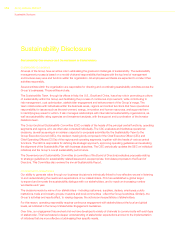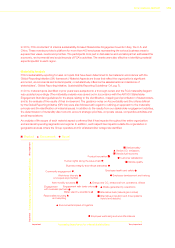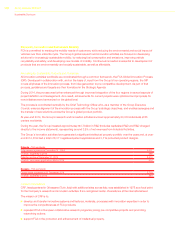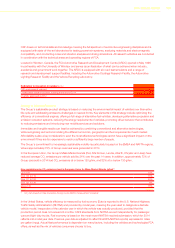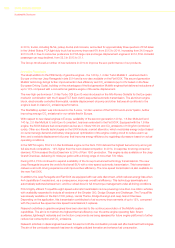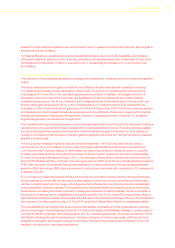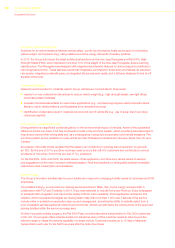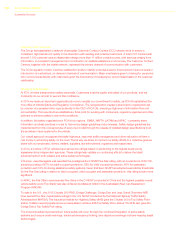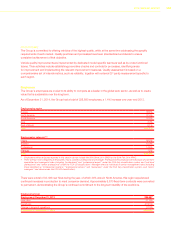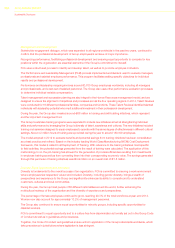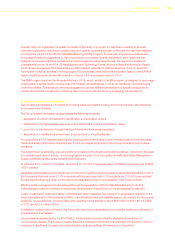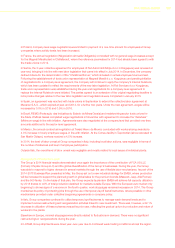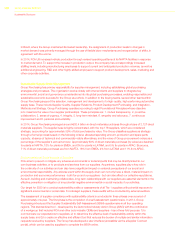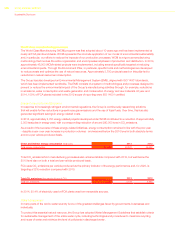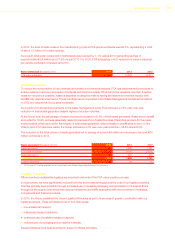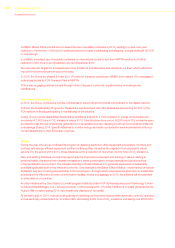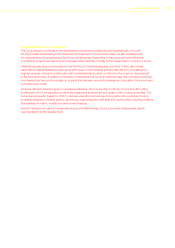Chrysler 2014 Annual Report Download - page 126
Download and view the complete annual report
Please find page 126 of the 2014 Chrysler annual report below. You can navigate through the pages in the report by either clicking on the pages listed below, or by using the keyword search tool below to find specific information within the annual report.
124 2014 | ANNUAL REPORT
Sustainability Disclosure
Management and Development
Stakeholder engagement dialogue, which was expanded to all regions worldwide in the past two years, continued to
confirm that the professional development of Group employees is an issue of major importance.
Recognizing performance, facilitating professional development and ensuring equal opportunity to compete for key
positions within the organization are essential elements of the Group’s commitment to its staff.
FCA uses a structured process to identify and develop talent, as well as to promote employee motivation.
The Performance and Leadership Management (PLM) process implemented worldwide is used to evaluate managers,
professionals and salaried employee performance. This program facilitates setting specific objectives for individual
results and professional development.
Performance and leadership mapping involves around 60,700 Group employees worldwide, including all managers
and professionals, and a sub-set of salaried personnel. The Group also uses other performance evaluation processes
to determine individual variable compensation.
Talent management and succession planning are also integral to the Human Resources management model, and are
designed to ensure the alignment of objectives and processes across the four operating regions. In 2014, Talent Reviews
were conducted for 16 different professional families, companies and functions. These Talent Reviews identified talented
individuals with leadership potential who merit additional investment in their professional development.
During the year, the Group also invested around €66 million in training and skill-building initiatives, which represent
another important management tool.
The Group’s extensive training programs were expanded to include new initiatives aimed at strengthening individual
skills and performance by leveraging the Group’s diversity of talent, experience and cultures. The new initiatives included
training and seminars designed to equip employees to operate with the same degree of effectiveness in different cultural
settings. About 4.3 million hours of training were provided during the year to around 180,000 employees.
The model adopted in 2012 to evaluate benefits and potential savings from training initiatives has been consolidated
as a best practice and refined. Based on the industry leading World Class Manufacturing (WCM) Cost Deployment
framework, this model is called Cost Deployment of Training. With reference to the training initiatives most specific
to field activities, the potential savings generated from the result of training were calculated. The application of this
methodology to on-the-job-training has allowed for the generation of process efficiencies resulting from investments
in employee training as well as from converting them into their corresponding economic value. The savings generated
through this perimeter of training initiatives was €3.9 million on an overall cost of €1.5 million.
Diversity: Equal Opportunity and Innovation
Diversity is fundamental to the overall success of an organization. FCA is committed to ensuring a work environment
where employees feel respected, valued and included. Diversity, including gender diversity, brings a wealth of
perspectives and experience to the Group and significantly enhances its ability to compete and to understand
customers, cultures and local communities.
During the year, the Group hired people of 65 different nationalities around the world, further enhancing the
multicultural makeup of the organization and the diversity of experience and perspectives.
The percentage of female employees continued to grow, reaching 20.3% of the total workforce at year-end 2014.
Women now also account for approximately 13.2% of management personnel.
The Group also continued to ensure equal opportunities for minority groups, including specific opportunities for
disabled workers.
FCA’s commitment to equal opportunity and to a culture free from discrimination is formally set out in the Group Code
of Conduct as well as in guidelines and procedures.
Together, the Code of Conduct and guidelines ensure uniform application of the Group’s standards worldwide, which
take precedence in jurisdictions where legislation is less stringent.


